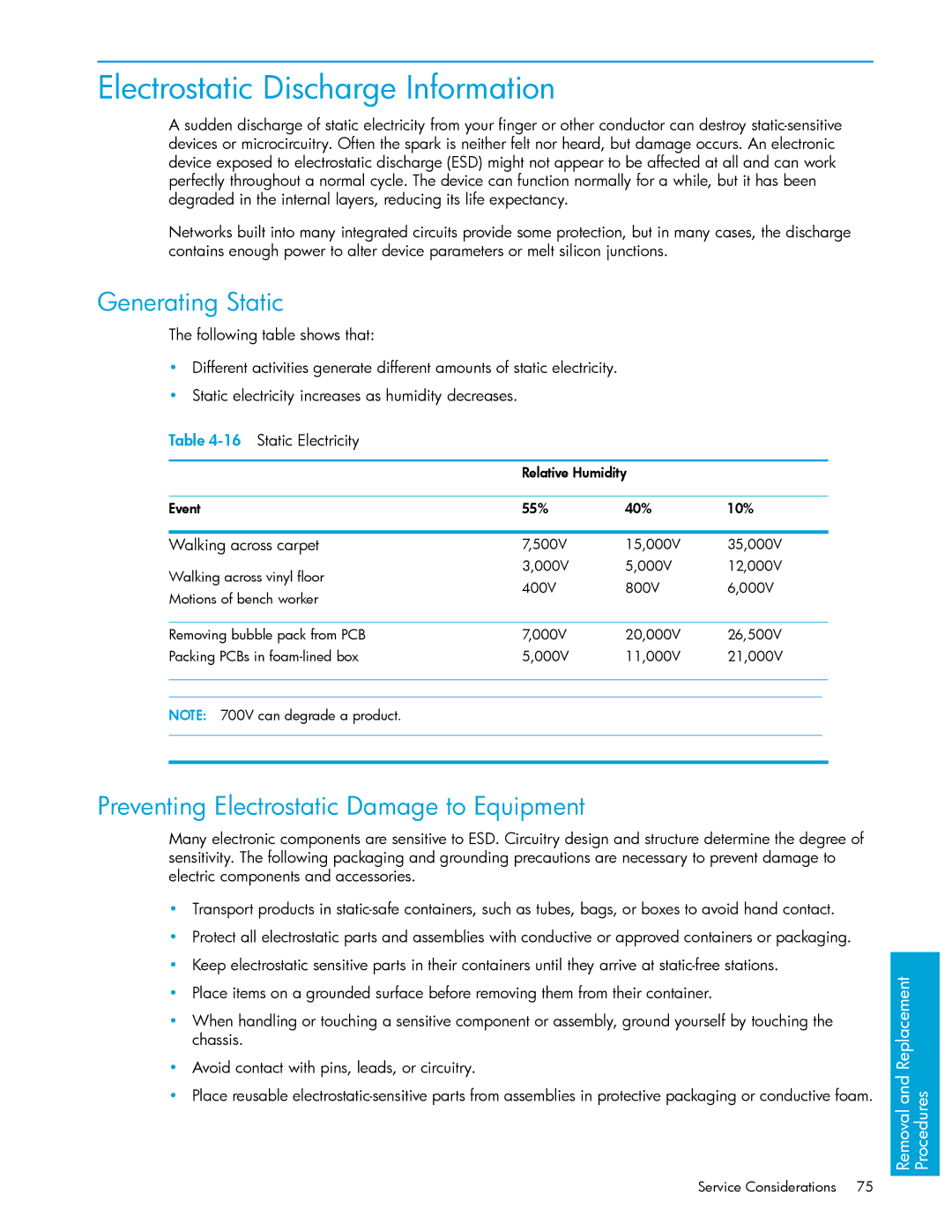
Electrostatic Discharge Information
A sudden discharge of static electricity from your finger or other conductor can destroy
Networks built into many integrated circuits provide some protection, but in many cases, the discharge contains enough power to alter device parameters or melt silicon junctions.
Generating Static
The following table shows that:
•Different activities generate different amounts of static electricity.
•Static electricity increases as humidity decreases.
Table
| Relative Humidity |
|
| ||
|
|
|
|
| |
Event | 55% | 40% | 10% |
| |
|
|
|
|
| |
Walking across carpet | 7,500V | 15,000V | 35,000V | ||
Walking across vinyl floor | 3,000V | 5,000V | 12,000V | ||
400V | 800V | 6,000V | |||
Motions of bench worker | |||||
|
|
|
| ||
|
|
|
|
| |
Removing bubble pack from PCB | 7,000V | 20,000V | 26,500V | ||
Packing PCBs in | 5,000V | 11,000V | 21,000V | ||
|
|
|
|
| |
|
|
|
|
| |
NOTE: 700V can degrade a product.
Preventing Electrostatic Damage to Equipment
Many electronic components are sensitive to ESD. Circuitry design and structure determine the degree of sensitivity. The following packaging and grounding precautions are necessary to prevent damage to electric components and accessories.
•Transport products in
•Protect all electrostatic parts and assemblies with conductive or approved containers or packaging.
•Keep electrostatic sensitive parts in their containers until they arrive at
•Place items on a grounded surface before removing them from their container.
•When handling or touching a sensitive component or assembly, ground yourself by touching the chassis.
•Avoid contact with pins, leads, or circuitry.
•Place reusable
Removal and Replacement Procedures
Service Considerations | 75 |
